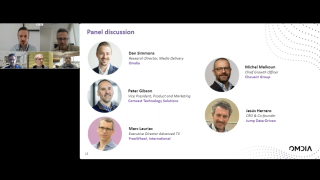The New Ad Management? Meet me in the cloud
April 3, 2018
The relationship between time-shifted viewing and advertising is shaped by the increasing power of consumer choice, and the need for processes that allow advertisers to meet customers on the customers’ timetable and device preference. For advertisers who want to reach their intended customers, the sheer variety of devices and destinations has introduced unprecedented levels of complexity. Once time-shifted viewing is added to the mix, advertisers must deliver assets in near-real time in order to fully capitalize on the VOD market. It’s a hurdle that has kept a lot of ads out of the on-demand space.
The advantage of a centralized, cloud-based advertising management model is that it removes complexity from both the buy and sell side of the delivery spectrum, creating a mid-point where every player in the video advertising ecosystem can quickly identify assets and deliver them fast enough to be viable as part of a VOD playback. Along the way, process waste and unneeded manual intervention are eliminated in favor of a streamlined machine-to-machine workflow. I’ll be presenting on this topic at this year’s NAB convention in April and wanted to share a little about how the cloud presents a transformative approach for all delivery, time-shifted or otherwise.
3 days: Not best practice anymore
The process for delivering linear video, aka “publishing for consumption according to a schedule,” might be generally understood, but every content provider has its own method for doing it. VOD workflows, mostly implemented as bolt-on processes to an existing linear workflow, add another layer of complexity.
It takes somewhere between 24 and 72 hours to tailor one spot into every iteration it needs in order to be available for play across MVPDs and other digital distributors. For a large population of time-sensitive ads out there, the wide discrepancies in processing time from iteration to iteration in a traditional VOD workflow make it a tough place for advertisers to fully capitalize on.
Once you compound the challenge across the hundreds of thousands of ads that a major content provider will handle each year, it’s easy to see why the traditional VOD workflow isn’t ideal for advertising assets with a shorter shelf life, like local ads or time-bound promotions. If there was just a way to deliver them faster, and swap them out as soon as they’ve run their course . . .
The centralized “collaborative cloud” model
Cloud advertising management is revolutionizing the entire ad delivery workflow by creating a collaborative environment that can be accessed by players across the delivery path. Benefits include:
- Quality-assured mezzanine assets, ready for distribution at the press of a button
- Centralized library and asset management terminal
- Standards and Practices approval; seamless pass/fail functionality
- End-point aware processing and distribution
- End-to-end support and visibility, instant asset tracking
Ad operations teams can attain instant access to advertising spots; from there, they can automatically prepare and distribute non-linear ad content to MVPDs and other digital properties. Content providers can source content and tailor versions for all screens. Collecting ad spots together into one common cloud-accessible clearing house results in streamlined, quality assured, and timely campaign execution across any platform.
For content providers, advertisers, or agencies, the speed of execution makes all the difference between a successful campaign and one that under-performs. Ingest, processing, and distribution times are reduced from days to hours; bringing inventory to ready-to-air status, serving impressions faster than ever, and opening up time-shifted viewing to more forms of advertising, such as local ads that generally age too quickly to take advantage of the on-demand market.
Destination-specific rules can be managed more effectively as well. For example, specific rules around acceptable ads for a family-friendly video destination (rules such as no ads with guns, no smoking, etc.) can be managed or applied specifically in a centralized cloud environment. The content provider would need only to access a user interface (UI), locate the asset, review it, and apply rules to guide its delivery.
Less duplication, more monetization? Yes, please
The benefits of the advertising management cloud will be fully realized as more and more businesses move their processes to it, simplifying workflows and adding more options to content monetization strategies. As a “one-stop shop” for all delivery needs, the cloud makes a compelling argument for itself, but future benefits also extend into improved tracking and reduced file duplication, both of which are long-standing, interconnected issues across the workflow.
Regardless of where an ad is originated and where it needs to be played, the centralized cloud model is an elegant way to improve and streamline the advertising delivery ecosystem. The inherent process efficiencies bring increased responsiveness and visibility, and ultimately generate added value and revenue capabilities of each piece of content. This “meet me in the middle” architecture breaks down the wall between ad buyers and sellers and opens up collaboration in unprecedented ways.




